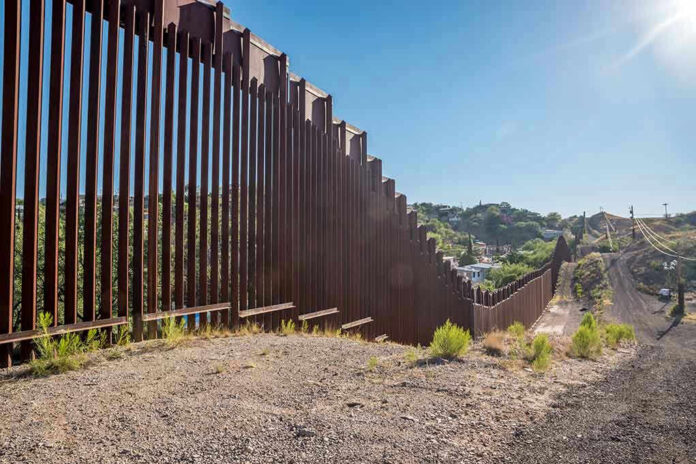Federal plans to push a new “smart wall” through Laredo, Texas have reignited the battle over border security, property rights, and federal overreach—raising the stakes for constitutional liberties and community control in 2025.
Story Snapshot
- Laredo, a key Texas trade hub long spared from wall construction, now faces a federal “smart wall” project despite intense local backlash.
- Federal agencies are advancing the wall using eminent domain and advanced surveillance, fueling concerns over government overreach and erosion of property rights.
- Laredo officials and residents warn of threats to the city’s economy, environment, and cross-border culture, as city council prepares legal challenges.
- The debate spotlights ongoing tensions between national security priorities and the constitutional rights of citizens living along the border.
Federal “Smart Wall” Plans Threaten Local Control in Laredo
The Department of Homeland Security has revived border wall construction in Laredo, Texas, unveiling blueprints for a so-called “smart wall” that combines steel barriers with surveillance technology. Unlike earlier phases that bypassed Laredo due to logistical and community resistance, this plan marks the city’s first major engagement with federal border infrastructure. Officials have announced that no contracts have been awarded for Laredo yet, but the broader project has received $4.5 billion in funding. This aggressive expansion, echoing the Trump administration’s original priorities, places Laredo at the center of the national debate over border security and American sovereignty.
City leaders and residents have mobilized in opposition, citing the risk to Laredo’s unique economic and cultural ties with Mexico. Mayor Victor D. Treviño and the city council argue that the wall could permanently alter the Rio Grande riverfront, disrupt billions in annual trade, and damage the city’s reputation as one of Texas’s safest communities. As Laredo prepares for public hearings and legal reviews, property owners have raised alarms over eminent domain—the federal government’s power to seize private land for wall construction. These developments have sharply divided the community and intensified calls for local input in border security decisions.
Battle Lines Drawn Over Constitutional Rights and Local Autonomy
Laredo’s confrontation with federal authorities highlights deeper tensions over individual liberty, federalism, and the right to self-determination. Local officials contend that Washington’s top-down approach threatens constitutional protections, including property rights and due process. The city’s legal team is gathering evidence to challenge the government’s eminent domain claims, emphasizing the need to respect private ownership and community consent. Meanwhile, advocates point to Laredo’s proven safety record without a border wall, questioning the necessity and effectiveness of the planned barriers. The debate has brought together business owners, environmental groups, and residents in a rare show of unity against what they see as an unnecessary imposition on their way of life.
Proponents of the wall argue that advanced surveillance and physical barriers are critical to combating cartel activity and illegal crossings, citing recent discoveries of cross-border tunnels and ongoing security threats. However, critics note that most smuggling occurs at legal points of entry, not along open riverbanks. This data-driven argument, supported by local law enforcement, challenges the premise that a wall will meaningfully improve security in a city where lawful commerce and cross-border cooperation are foundational. The city council’s upcoming review of wall blueprints and resident polling reflect the high stakes and deep divisions surrounding the project.
Economic and Environmental Consequences Raise Alarm
Local business leaders warn that wall construction could disrupt trade, tourism, and the daily flow of goods vital to Laredo’s prosperity. The city, which sits at a major international gateway, relies on seamless cross-border movement for economic growth. Environmental advocates are also sounding the alarm about risks to the Rio Grande, Laredo’s sole water source, and the broader ecosystem. Any alteration to the riverfront could have lasting impacts on water quality, wildlife, and regional stability. As legal challenges mount, the outcome will likely set important precedents for how federal power is balanced against local interests and constitutional rights along the nation’s borders.
Despite federal assurances of technological modernization and national security, many in Laredo view the “smart wall” as a symbol of government overreach and disregard for American values. The city’s resistance underscores the broader national tension between securing the border and preserving the freedoms that define the United States. The final outcome in Laredo may shape the future of border policy and the meaning of local autonomy for years to come.
As the debate intensifies, all eyes are on the November city council sessions and the legal paths Laredo residents may pursue. The stakes are clear: not just the future of one city, but the enduring balance between national security and the constitutional rights of America’s border communities.
Sources:
Laredo federal DHS border wall
Border Watch: Federal ‘Smart Wall’ Plans for Laredo and Texas Push to Find Cartel Tunnels
Texas Border Wall Construction Status
Laredo border wall framework, legal fight over riverfront











